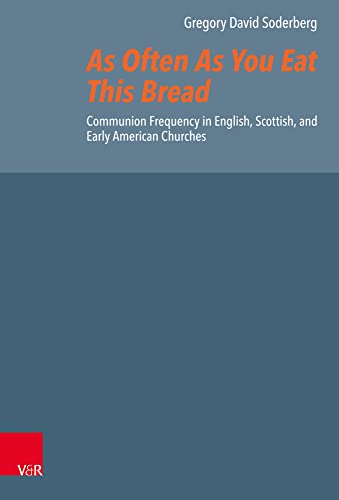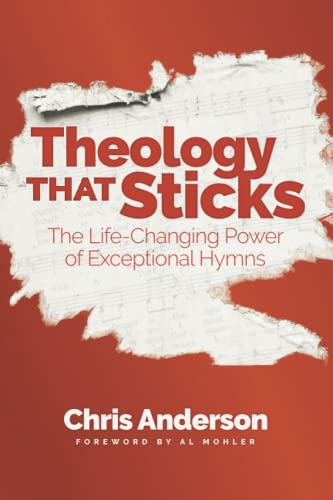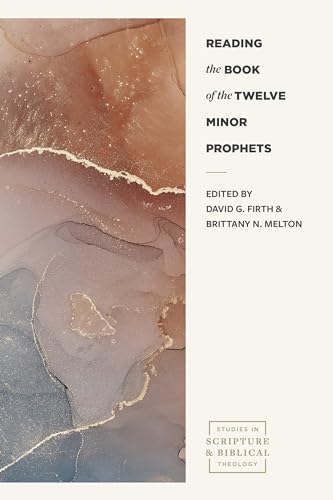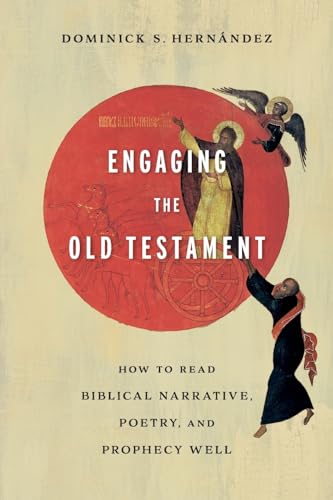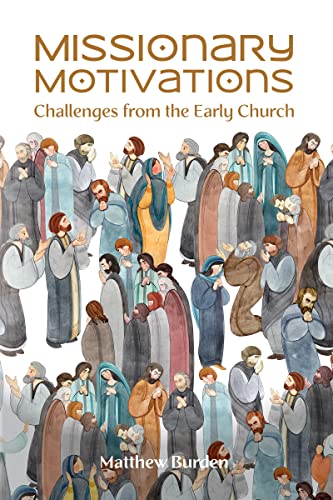As Often as You Eat This Bread: Communion Frequency in English, Scottish, and Early American Churches
Written by Gregory David Soderberg Reviewed By Justin MyersAs Often as You Eat This Bread is the result of Gregory Soderberg’s doctoral work and is a historical evaluation of communion frequency within the Reformed tradition. He argues that there was never one “Reformed” pattern of communion frequency because the desire to celebrate the supper was often “tempered” by issues of church discipline and preparation (p. 251). Soderberg justifies these claims with an extensive summary and concise analysis of primary documents, most acutely expressed in his examination of trans-Atlantic debates in the eighteenth and nineteenth centuries.
The issue of the Lord’s Supper is well-trodden ground in the Reformation period. Being that the Mass was the center of medieval Christian worship, the question of the Eucharist in the Reformation was heated and tedious. The secondary literature on the Reformed tradition and their views of the Supper is, therefore, extensive, leading Soderberg to rely consciously on previous scholarship to situate the historical background of his own time period of focus. From the beginning of Reformed Christianity, a variety of practices is evident in communion frequency. Soderberg illustrates that Huldrych Zwingli, Martin Bucer, and John Calvin all held that the Supper should be celebrated more than was common in the medieval period, and yet each was tempered in varying degrees by both the desire for preparation and sociopolitical factors.
Soderberg’s focus is on the English expressions of Reformed Christianity. “Communion seasons” developed in late 16th century Scotland, in which the Reformed churches celebrated the Supper only a few times a year, with each season lasting a few days or more to ensure that parishioners were sufficiently instructed and prepared through celebration, fasting, confession, and church discipline. Administratively, the Scots could not afford to commune more often. As the Puritan tradition developed in England and America, men like Stephen Charnock, Matthew Henry, Samuel Willard, and Cotton Mather emphasized preparation by prescribing a strict self-examination. As a result, many in Puritan congregations attended the Supper infrequently for immense fear of coming in an unworthy manner. Yet the book makes clear that pastors and theologians felt a tension between practicing communion frequently and adequate preparation. Soderberg shows that Solomon Stoddard, an American Puritan pastor in the late 17th and early 18th century, lowered his expectations of preparation for the sake of a more open and attended communion, while many Puritans, including Stoddard’s grandson Jonathan Edwards, opposed Stoddard and asserted anew the priority of preparation.
The issue of communion frequency came to a head in the 18th century, especially in the intercontinental Scottish Reformed churches. Soderberg illustrates that John Willison and John Erskine were the “instigators” of frequency debates and advocated a more frequent celebration of the Supper (p. 198). They argued that passages in Acts 2 and 1 Corinthians 10–11 necessitated more frequent celebration of the Supper, that communion seasons were lavish and licentious, and that church history and the Reformed tradition supported a Supper celebrated more often. Soderberg points to others, such as Thomas Randall and John Thomson, who argued that there was no prescribed frequency in the Bible and that the Supper should be modeled on feasts like the Passover in the Old Testament, which were practiced infrequently. While the issue continued to be polarizing, a clear position of “careful frequency” developed over time, which admitted the Bible commanded no specific frequency yet sought to practice the supper as often as possible without neglecting proper and solemn preparation. Soderberg examines the literature from this period with care, showing clearly that from within the Scottish Reformed tradition, on both sides of the Atlantic, debaters expressed different hermeneutical priorities, diverse attitudes toward history, and ultimately varying convictions regarding communion frequency.
Communion seasons eventually disappeared among the Scots Reformed churches in favor of more frequent communion. This did not happen because the infrequent practice of the Supper was “un-Reformed.” Instead, Soderberg attributes the decline of communion seasons to a greater number of people arguing for frequency, the fact that American revivalism and seasons of preaching took the place of communion seasons and that these seasons had a distinct Scottish identity that did not resonate with the many American Reformed who were not themselves Scottish. This final point strengthens Soderberg’s main argument, showing that frequent practice of the Supper did not “replace” communion seasons as if it was “more Reformed.”
As Often as You Eat This Bread is an excellent survey of debates over the frequency of communion within the Reformed tradition as they developed after the Reformation. Especially as the English-speaking world took up the debate, Soderberg deals in detail with primary sources in summary and punctuates his surveys with analysis of exegetical, theological, and other contextual factors at play. The underlying question driving Soderberg’s study is what level of frequency has characterized Reformed churches in the tradition’s past. Looking at this past should, he hopes, undergird ecclesiological debates and practices for today. There was never any one stance from Reformed Christians, who varied in their frequency of communion, as well as in approaches to Scripture and history that undergirded their position. A fair treatment of primary sources, as well as reflection on the significance of debates for today, make this an insightful work for students of the Reformed tradition and a fruitful dialogue for Christians and pastors wrestling with the question of frequency for their own churches today.
Justin Myers
Justin Myers
Southeastern Baptist Theological Seminary
Wake Forest, North Carolina, USA
Other Articles in this Issue
Menzies responds to Tupamahu’s post-colonial critique of the Pentecostal reading of Acts and the missionary enterprise...
The Lamblike Servant: The Function of John’s Use of the OT for Understanding Jesus’s Death
by David V. ChristensenIn this article, I argue that John provides a window into the mechanics of how Jesus’s death saves, and this window is his use of the OT...
Geerhardus Vos: His Biblical-Theological Method and a Biblical Theology of Gender
by Andreas J. KöstenbergerThis article seeks to construct a biblical theology of gender based on Geerhardus Vos’s magisterial Biblical Theology...
Is the One God of the Old Testament and Judaism Exactly the Same God as the Trinitarian God—Father, Son, and Holy Spirit—of the New Testament and Christian Creeds?
by John Jefferson DavisThis article argues that the One God of the Old Testament and Judaism is exactly the same God as the Trinitarian God of the New Testament and Christian creeds...
A well-known Christian intellectual and cultural commentator, John Stonestreet, has often publicly spoken of the need for Christians to develop a theology of “getting fired...


